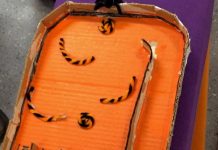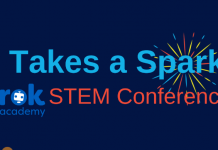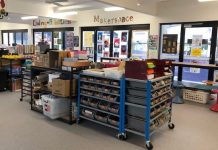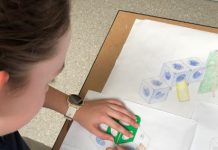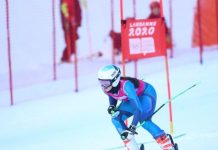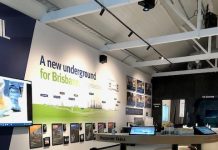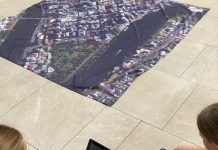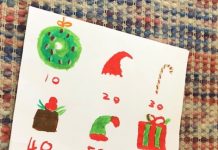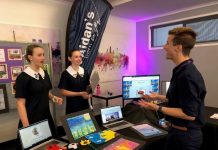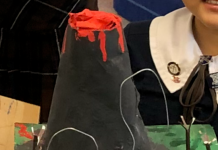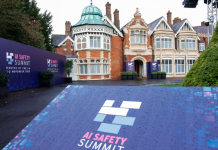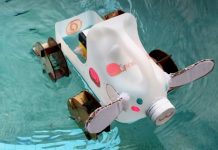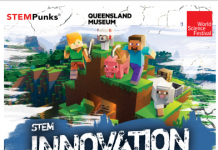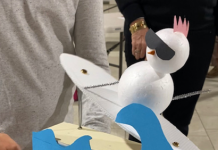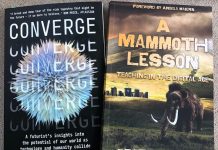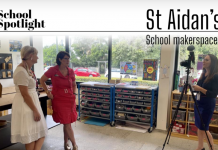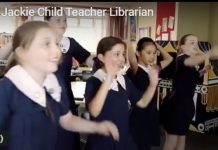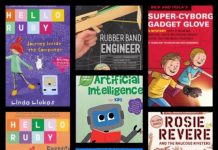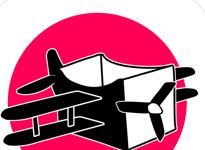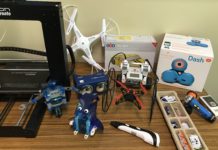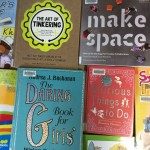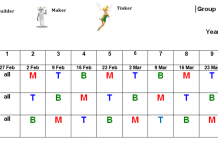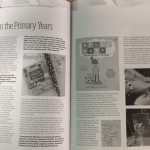 We are continuing our focus on coding in our library lessons, Megan and I were pleased to see our article on ‘Coding in the Primary Years’ feature in Queensland School Library Association Magazine.
We are continuing our focus on coding in our library lessons, Megan and I were pleased to see our article on ‘Coding in the Primary Years’ feature in Queensland School Library Association Magazine.
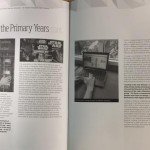
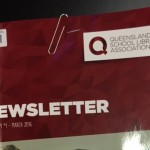
I’ve include an outline of ideas for this term below…..
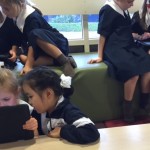 This term our Preps, Yr 1 and Yr 2 will continue their investigations into coding, with story as the driving force behind understanding and creating this language of technology. Literature such as ‘Hello Ruby’ will continue to inspire and educate, and make coding accessible and relevant to the lives of our students. The app ‘Caption’ will be used to identify and learn about the function of different areas of the Junior School Library (fiction, non-fiction, teacher reference and so forth) and Bee Bots will help the students to locate these areas with technology. The ScratchJnr site, as well as a wide variety of picture fiction resources, will be used to code and create stories with a narrative structure. Storymaking is key to making coding accessible to young people.
This term our Preps, Yr 1 and Yr 2 will continue their investigations into coding, with story as the driving force behind understanding and creating this language of technology. Literature such as ‘Hello Ruby’ will continue to inspire and educate, and make coding accessible and relevant to the lives of our students. The app ‘Caption’ will be used to identify and learn about the function of different areas of the Junior School Library (fiction, non-fiction, teacher reference and so forth) and Bee Bots will help the students to locate these areas with technology. The ScratchJnr site, as well as a wide variety of picture fiction resources, will be used to code and create stories with a narrative structure. Storymaking is key to making coding accessible to young people.
Year Three and Four students will to continue work in the area of coding, as well as investigations into the Dewey Decimal System and the elements of a story. The Dewey Decimal Classification (DDC), is a library classification system used in over 200, 000 libraries in more than 140 countries, so it’s relevance to students of today remains. It was developed in 1876 by Melvil Dewey, and remains relatively unchanged since this time. Arabic numerals are used for main classes of books in non-fiction, with fractional decimals adding further topic expansion; a healthy and hearty combination of maths and literacy skills indeed! Students will complete an online webquest based around the DDC to gain greater insight into this complex but very useful organisational system.
As students become familiar with ScratchJnr, they will be introduced to the full version of Scatch, which will be used to code a game with narrative structure to share with their peers. Coding is creative and can be a way to express oneself with a computer. Coding encourages real life skill building such as computational thinking, the idea of learning as a process not a product, sequencing and mathematical concepts. It also encourages persistence, perseverance and problem solving.
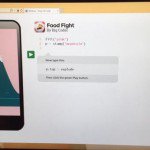 Year Five and Six students will be moving from being consumers of technology, to creators of technology, as we introduce the idea of app creation. Students will be introduced to the app ‘Bitsbox’ and use it to design an app for spreading the word about cybersafety. With Bitsbox, students learn the basics of programming and are introduced to Javascript, by creating an app which can then be scanned with a QR code to use on a phone!
Year Five and Six students will be moving from being consumers of technology, to creators of technology, as we introduce the idea of app creation. Students will be introduced to the app ‘Bitsbox’ and use it to design an app for spreading the word about cybersafety. With Bitsbox, students learn the basics of programming and are introduced to Javascript, by creating an app which can then be scanned with a QR code to use on a phone!
Students will be experimenting and having fun coding and playing ‘Code Combat’. They will also be programming our library drones to navigate the library using the ‘Tickle’ app.
As always, we will be exploring quality Australian and international literature relevant to the interests of the students as a group, and individually. We ensure that all students have the chance to enjoy our extensive and ever-growing fiction collection.

